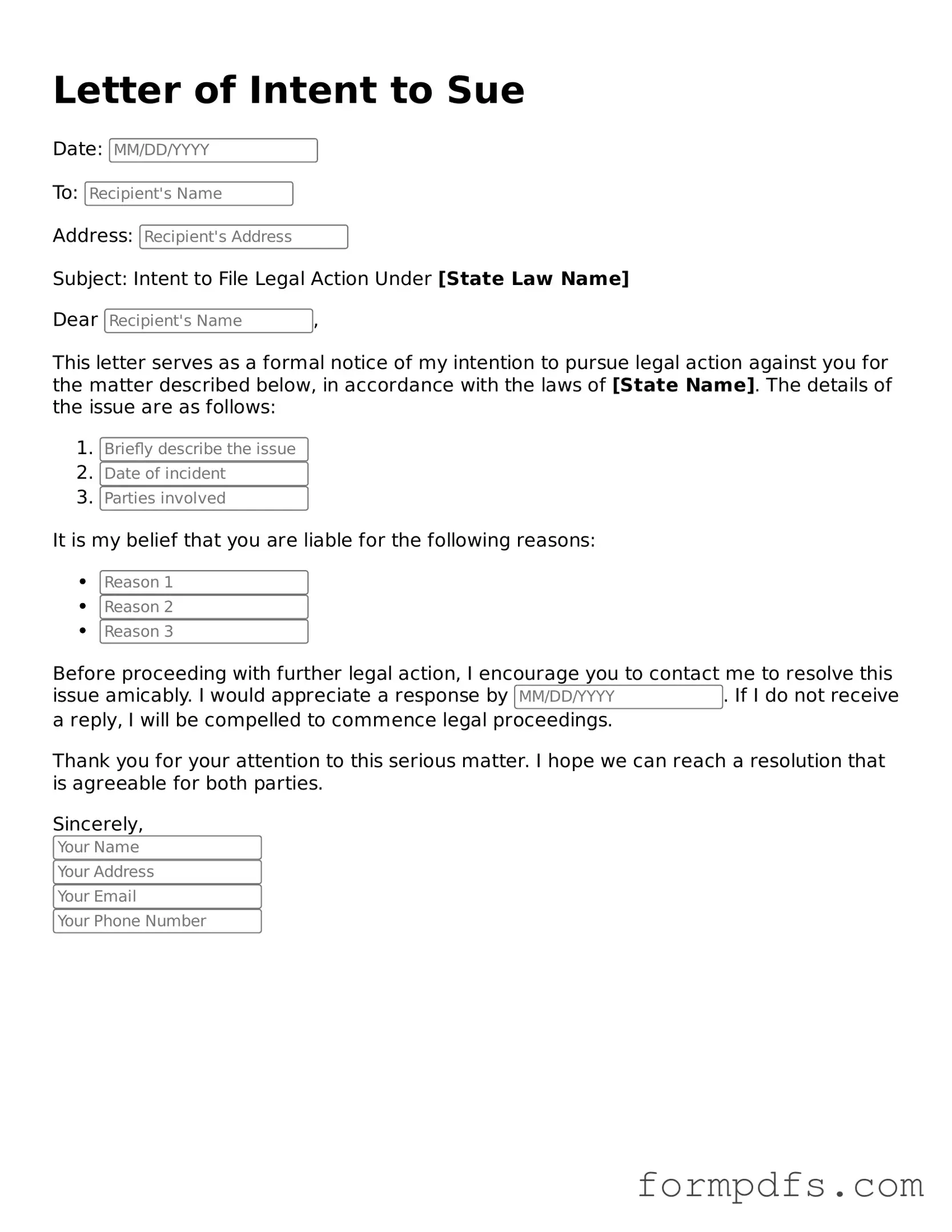Valid Letter of Intent to Sue Template
A Letter of Intent to Sue is a formal document that signals a party's intention to initiate legal action against another party. This letter serves as a precursor to a lawsuit, outlining the grievances and the basis for the potential legal claim. Understanding how to properly fill out this form is crucial for anyone considering legal action, so take the first step by clicking the button below to get started.
Open Letter of Intent to Sue Editor
